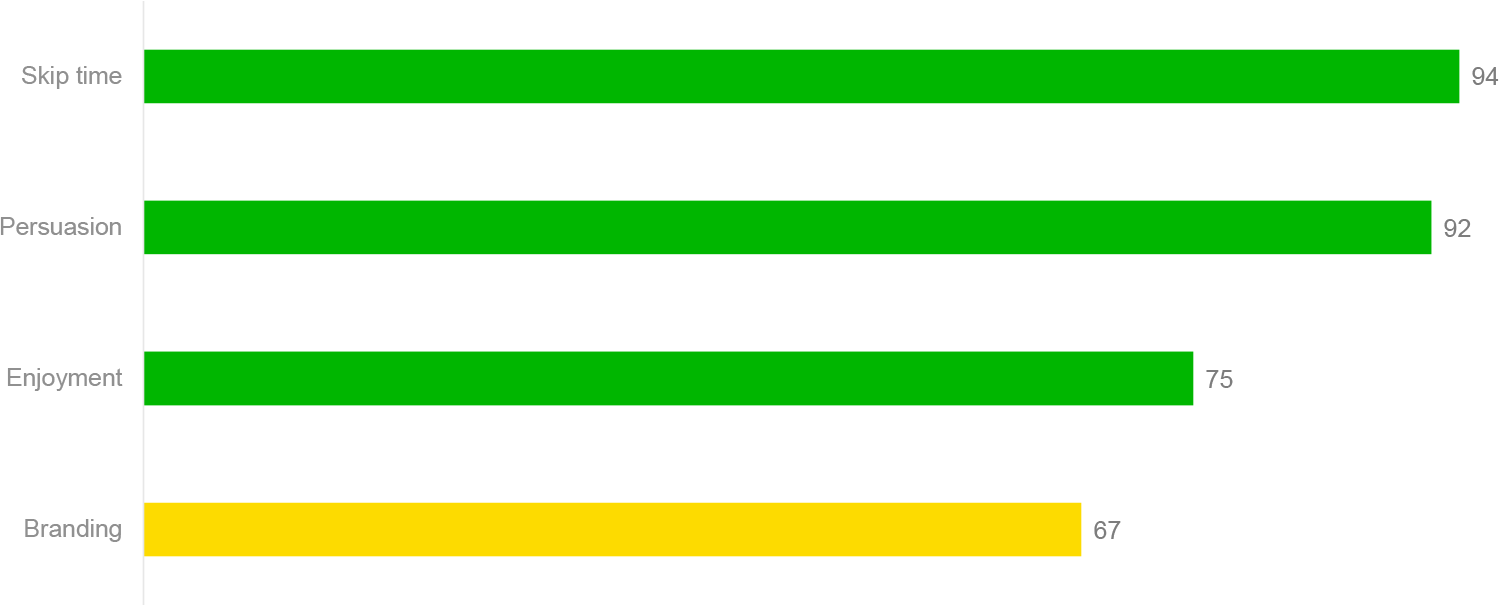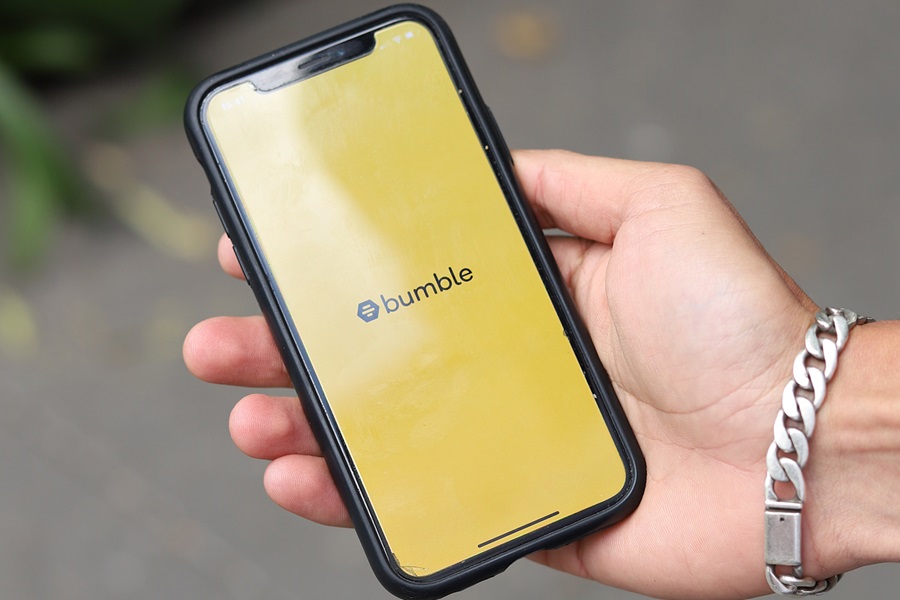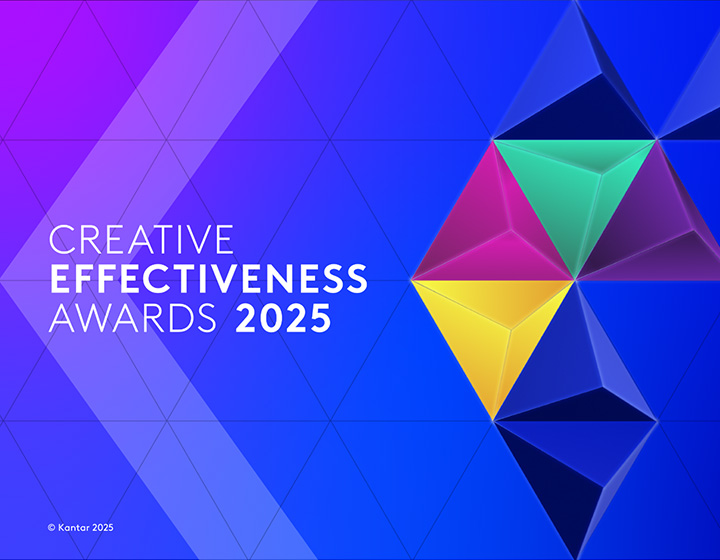My friends' stories about their experiences and perceptions of different dating apps got me wondering - just how effective is advertising in the dating app category? Looking at the ads, there seems to be a universal look, with attractive people, beautiful clothes and polished production that feels attractive but uniform, with little to differentiate them. And, as we shall see, it is not just my lack of personal relevance at fault.
Lack of distinctiveness is a widespread problem
The problem of brands using a category generic look is far from one that afflicts only dating apps. New cars driving effortlessly on a wet, winding road, happy kids munching on snacks, or the earnest but boring bank scenario. Tropes like these abound. And that’s a problem, because when every ad looks similar people are likely to forget which brand an ad is for. While many factors play into whether an ad is impactful, ads that most people find distinctive are 2.3 times more impactful than those which few people find distinctive (Source: Kantar’s Link Database).
What does the intended audience think?
Of course, no one sets out to create generic looking ads, but all too often it seems that a set of implicit guidelines evolves to cause every ad in a category to look the same. Like beauty, distinctiveness is in the eye of the beholder. And in the case of advertising, that means the intended audience. But advertisers rarely test competitive ads to learn what works in their category and how well their ads stand out from the competition.
What is the solution?
The use of AI in pretesting has opened a new opportunity to test ads from competitors across a given category, whether TV or digital, quickly and cost effectively. By doing so, you can identify which campaigns are breaking through and which have fallen into the look alike trap.
Using Link AI for Digital to test dating apps
Having seen yet another generic ad on YouTube, I decided to test a series of digital dating app ads using Link AI for Digital. To explore whether or not any of the ad campaigns have what it takes to make people swipe right.
With this objective in mind, I uploaded some ads into Link AI on Kantar Marketplace from four different dating apps. Link AI (for TV or Digital) uses learnings from our growing Link database of over 230,000 ads and machine learning to predict how consumers would rate an ad. Each ad takes about 15 minutes to process, while the machine parses the content for visual and audio characteristics and compares those characteristics back to the patterns identified from our Link pre-test database. The algorithm then produces a prediction of the likely scores on key creative pre-testing metrics, including Brand Power, Impact, Persuasion, Branding, Enjoyment and Affinity, and in the case of digital, predictions of skip time and action likelihood.
And the winner is Bumble!
So, what did I find? Well, if the analysis confirmed one thing, it is that it is difficult to judge whether ads will work well or not solely based on personal experience. Of the dating apps tested, there was one brand that cracked the advertising effectiveness code. Most of the ads tested for Bumble perform well, across the range of effectiveness metrics, notably branding and enjoyment, two of the most important.
Average percentiles for Branding and Enjoyment - dating app brands
Branding |
Enjoyment |
|
|---|---|---|
Brand A |
8 |
22 |
Brand B |
9 |
38 |
Brand C |
18 |
12 |
Bumble (average) |
48 |
59 |
The winning ad, Bumble’s ‘Make the first move’ on Facebook, scored the highest on most metrics.
Bumble’s ‘Make the first move’ Facebook ad

All ads aim to persuade
But let me take a step back, because there was uniformity to the way the different ads were predicted to work. Out of the 15 ads I tested, 11 were predicted to score well on persuasion. All the ads are designed to convince the viewer that they have something unique to offer the potential user, and in doing so, even if they have a very different message, they end up sounding like a sales pitch.
A bigger problem than tone of voice, however, is that trying to convince people to sign up now is only going to be effective among the small group of people ready to date someone new. Unless a brand can afford an always on advertising strategy, it is far better to attract people with enjoyable, distinctive and memorable content, which highlights what the brand has to offer, so that when someone is ready to date, yours is the app that comes to mind.
Bumble uses its distinctive color to good effect
My assessment of the ads in the light of the Link AI results suggests that the Bumble ads were likely to be well-branded because of the prominent use of the brand’s signature yellow. Brands should make use of their distinctive assets to ensure that people realize which brand is being advertised and help create strong brand-linked memory structures. Coupled with higher-than-average enjoyment and affinity, strong branding meant that not only are the Bumble ads predicted to drive immediate response, but they are also likely to help build the Bumble brand long-term.
A creative idea that has potential
While I am not going to reveal which other dating apps we included in the comparison, there is one that has a campaign with the potential to be more effective than it is right now. The problem the campaign faces is a familiar one. The ads use a consistent, clever, campaignable idea, and one that Link AI predicted to be reasonably enjoyable and persuasive, however, branding was very weak. There is little in the ads to link the creative idea to the specific brand. And, as noted, if people cannot remember which brand the ad is for then the impression is likely wasted.
And the also rans
None of the other ads tested are predicted to be very effective. One set is very fast paced, which probably impacted comprehension. The other brand’s ads are less formulaic than the other campaigns, and so the results are more variable, but all executions are predicted to struggle for engagement, particularly the one featuring a series of people talking about their dating experiences.
Not all dating app ads are bland
Contrary to my expectations, testing with Link AI proved that not all dating app ad campaigns are vanilla. Bumble’s Facebook ads were predicted to work well, even if the other brand campaigns tested all fell short on important effectiveness measures. But the other brands could use findings like these to improve. For instance, given the results, the brand with the engaging but poorly branded campaign, should be able to enhance their executions to better highlight which brand is being advertised.
Does your brand’s advertising stand out from the crowd?
The opportunity to conduct this sort of competitor level assessment would have been prohibitive in the past, but with the ability test ads as scale, quickly and cost effectively using AI, new opportunities have opened. For instance, to validate their ABCD effectiveness framework, Google used Link AI to test over 11,000 ads in less than a month. Most advertisers are never going to test more than a fraction of that number, but they now have the chance to assess the competitive ad landscape and ensure that their brand stands out from the crowd. And testing does not need to be done all at once. Some of our clients are using Link AI to new competitive copy when it appears to assess its likely effectiveness and guide their brand’s best response.
Get in touch if you’d like to learn more about how AI can help optimize your advertising.
Link AI for TV and Link AI for Digital are available on Kantar Marketplace.


